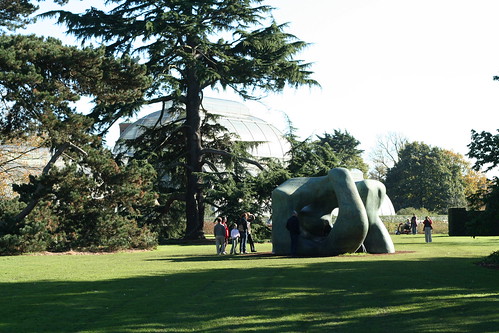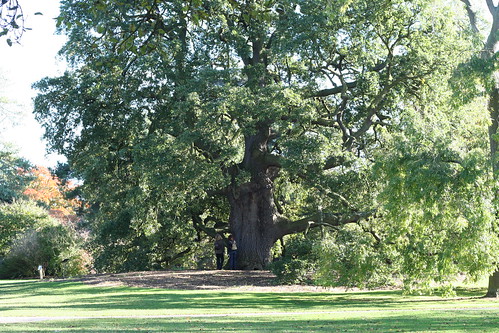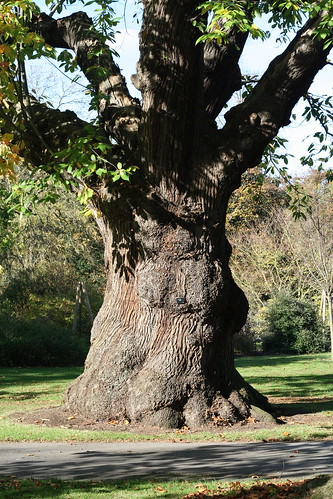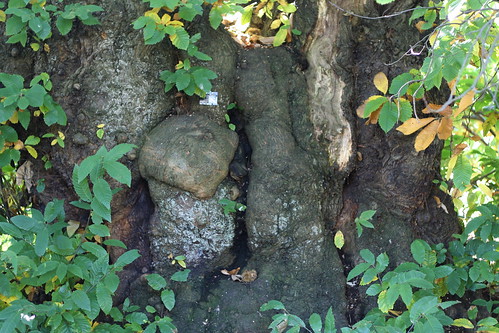I went to Kew Gardens to see the Henry Moore sculptures. Which were OK, I guess. It’s not easy to display such a lot of very large sculptures—28 in all—but Kew is big enough that there’s plenty of room for them, so it’s quite a good match. I wandered around desultorily looking at them but they didn’t really grab me; not that I tried that hard to engage with them. I’d be curious to know whether I would have got more out of them if they were in a field; i.e. if there was less other interesting stuff around to distract me.

The particular thing that side-tracked me most was Big Trees; and specifically, some of the oaks and chestnuts. Now there has been a botanical collection at Kew for over 200 years, so there are some decent sized exotic trees. The conifer in the picture above is a pretty imposing example. But the trees I was looking at must surely be older still. There was one particular chestnut which must have been about eight foot in diameter. I didn’t get a picture that did that one justice, but here’s a smaller one:

I love the deeply grooved bark of mature chestnut trees. The sweet chestnut isn’t actually native to Britain; it was introduced in the Middle Ages. The oak, Quercus robur, is a native species. Of course it’s native to the whole of Europe, so the fact that in this country it’s often referred to as the English Oak is a wee bit parochial. Still, it’s a key feature of the English landscape. And this is an impressive example. Not a great picture, but hopefully the people standing in front of it give some sense of scale.

I love these big trees; there’s something so satisfying about the sheer bulk of them. It makes you wonder what England looked like when it was a genuinely wild landscape; for many hundreds of years, the normal fate of a mature oak was to be cut down and used to make a timber-framed building or a ship. But once upon a time there must have been thousands of ancient trees all over the place. That landscape, of untouched primary forest, isn’t even a folk memory now; it was long gone by the time of Stonehenge. British woodland is artificial, a managed resource. Or now that wood is less in demand, an unmanaged resource; but I don’t think much of it is likely to be left alone for the few hundred years necessary to revert to wildwood.
Here’s another chestnut. I think the shape of it, with a fat trunk splitting into lots of branches a short way up, may be a sign that it was once pollarded. But I’m not sure.

Just think, that was probably already a mature tree when George III was confined to Kew Palace, strapped to his bed by the doctors and being bled, cupped, blistered and given emetics in a desperate and ignorant attempt to cure his madness.
» All pictures are hosted on my Flickr account, and you can see bigger versions there, if you want.




